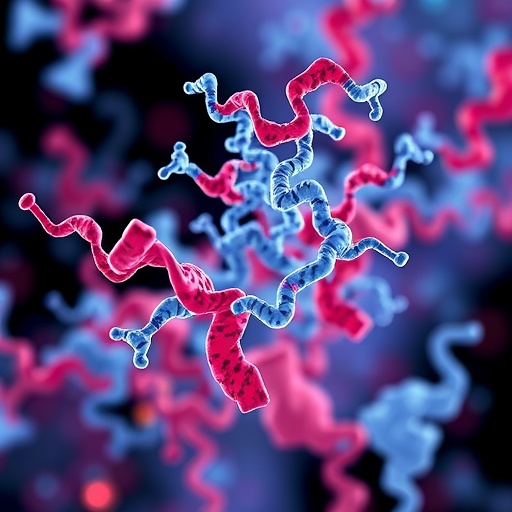Malaria causes the bodies of its human hosts to emit specific odours from the skin that make the hosts even more attractive to mosquitoes, which invites further bites and risks infection of more mosquitoes and wider transmission of the disease.
It's a vicious circle but one that has enabled a multinational team of researchers to identify the odours as organic hydrocarbons in the form of three aldehydes, heptanal, octanal and nonanal, whose discovery could bring relief to a disease that claimed nearly half a million lives in 2016.
"These are fairly common smells, which are described as fruity or grassy," says Jetske de Boer, a researcher in entomology and chemical ecology at Wageningen University & Research in The Netherlands. "Now that we have identified and quantified the aldehydes associated with malaria infection, we understand more of the parasite's infection route."
The team is led by Wageningen and the London School of Hygiene and Tropical Medicine, with support from key stakeholders including Rothamsted Research, for its expertise in data analysis and the chemical ecology of insects. The team's findings are published today in PNAS. "Our work provides evidence that human hosts become more attractive to malarial mosquitoes during infection," says Mike Birkett, a chemical ecologist in the Department of Biointeractions and Crop Protection at Rothamsted.
He adds: "Identification of the volatile human-derived compounds that cause this phenomenon provides opportunities to develop these compounds as biomarkers of malaria and as components of chemical lures to trap mosquitoes".
Malaria occurs mainly in tropical regions and its incidence started to rise in 2016, after falling since 2010, records WHO's World Malaria Report 2017. In 2016, 91 countries reported 216 million cases, and 445, 000 deaths; 15 countries account for 80% of the figures, and all but one is in sub-Saharan Africa.
The latest study focused on a group of 56 children between 5 and 12 years old, and it followed earlier research that showed children who carry the malaria parasite, Plasmodium, to be more attractive to mosquitoes, which can bite through skin and infect bloodstreams, than healthy children.
"The specific smell is the odour plume of volatiles emitted from skin, think sweat," says John Caulfield, an analytical chemist at Rothamsted, who used gas chromatography and mass spectrometry to identify the active compounds. "Only a handful are of interest to mosquitoes." Confirmation of the chemistry results came through statistical analysis of the data from the experiments, which comprised "linear mixed modelling of quantified volatile compounds and generalised linear modelling of counts of mosquitoes," says Stephen Powers, a data analyst at Rothamsted. This statistical analysis, he notes, "revealed how confident we can be that certain compounds were indeed produced in greater amounts by infected individuals and that mosquitoes had enhanced attraction to these chemicals."
###
NOTES TO EDITORS
Publication:
Robinson et al, 2018, PNAS: Plasmodium-associated changes in human odor attract mosquitoes [link live after publication; for embargoed copies, contact [email protected] // mob: 07801 356 490]
Rothamsted Research contacts:
Mike Birkett, Chemical Ecologist
Tel: +44 (0) 1582 938 205
E-mail: [email protected]
John Caulfield, Analytical Chemist
Tel: +44 (0) 1582 938 864
Email: [email protected]
Stephen Powers, Data Analyst
Tel: +44 (0) 1582 938 384
Email: [email protected]
Susan Watts, Head of Communications
Tel: +44 (0) 1582 938 109
Mob: +44 (0) 7964 832 719
E-mail: [email protected]
Other contacts:
Jetske de Boer, Researcher in Entomology and Chemical Ecology
Wageningen University & Research
Tel: + 31 (0 ) 6 2830 2558
Email: [email protected]
Jac Niessen, Science Information Officer
Wageningen University & Research,
Tel: +31 (0) 317 485003
Email: [email protected]
Lucy Fordham, Media Office
London School of Hygiene & Tropical Medicine
Tel: +44 (0) 207 927 2802
Email: [email protected]
About Rothamsted Research
Rothamsted Research is the longest-running agricultural research institute in the world. We work from gene to field with a proud history of ground-breaking discoveries, from crop treatment to crop protection, from statistical interpretation to soils management. Our founders, in 1843, were the pioneers of modern agriculture, and we are known for our imaginative science and our collaborative influence on fresh thinking and farming practices.
Through independent science and innovation, we make significant contributions to improving agri-food systems in the UK and internationally. In terms of the institute's economic contribution, the cumulative impact of our work in the UK was calculated to exceed £3000 million a year in 2015 (Rothamsted Research and the Value of Excellence: A synthesis of the available evidence, by Séan Rickard). Our strength lies in our systems approach, which combines science and strategic research, interdisciplinary teams and partnerships.
Rothamsted is also home to three unique resources. These National Capabilities are open to researchers from all over the world: The Long-Term Experiments, Rothamsted Insect Survey and the North Wyke Farm Platform.
We are strategically funded by the Biotechnology and Biological Sciences Research Council (BBSRC), with additional support from other national and international funding streams, and from industry. We are also supported by the Lawes Agricultural Trust (LAT).
For more information, visit https://www.rothamsted.ac.uk/; Twitter @Rothamsted
About BBSRC
The Biotechnology and Biological Sciences Research Council is part of UK Research and Innovation, a non-departmental public body funded by a grant-in-aid from the UK government.
BBSRC invests in world-class bioscience research and training on behalf of the UK public. Our aim is to further scientific knowledge, to promote economic growth, wealth and job creation and to improve quality of life in the UK and beyond.
Funded by government, BBSRC invested £469 million in world-class bioscience in 2016-17. We support research and training in universities and strategically funded institutes. BBSRC research and the people we fund are helping society to meet major challenges, including food security, green energy and healthier, longer lives. Our investments underpin important UK economic sectors, such as farming, food, industrial biotechnology and pharmaceuticals.
More information about BBSRC, our science and our impact.
More information about BBSRC strategically funded institutes
About LAT
The Lawes Agricultural Trust, established in 1889 by Sir John Bennet Lawes, supports Rothamsted Research's national and international agricultural science through the provision of land, facilities and funding. LAT, a charitable trust, owns the estates at Harpenden and Broom's Barn, including many of the buildings used by Rothamsted Research. LAT provides an annual research grant to the Director, accommodation for nearly 200 people, and support for fellowships for young scientists from developing countries. LAT also makes capital grants to help modernise facilities at Rothamsted, or invests in new buildings.
Media Contact
Susan Watts
[email protected]
44-015-829-38109
https://www.rothamsted.ac.uk/
http://dx.doi.org/10.1073/pnas.1721610115




